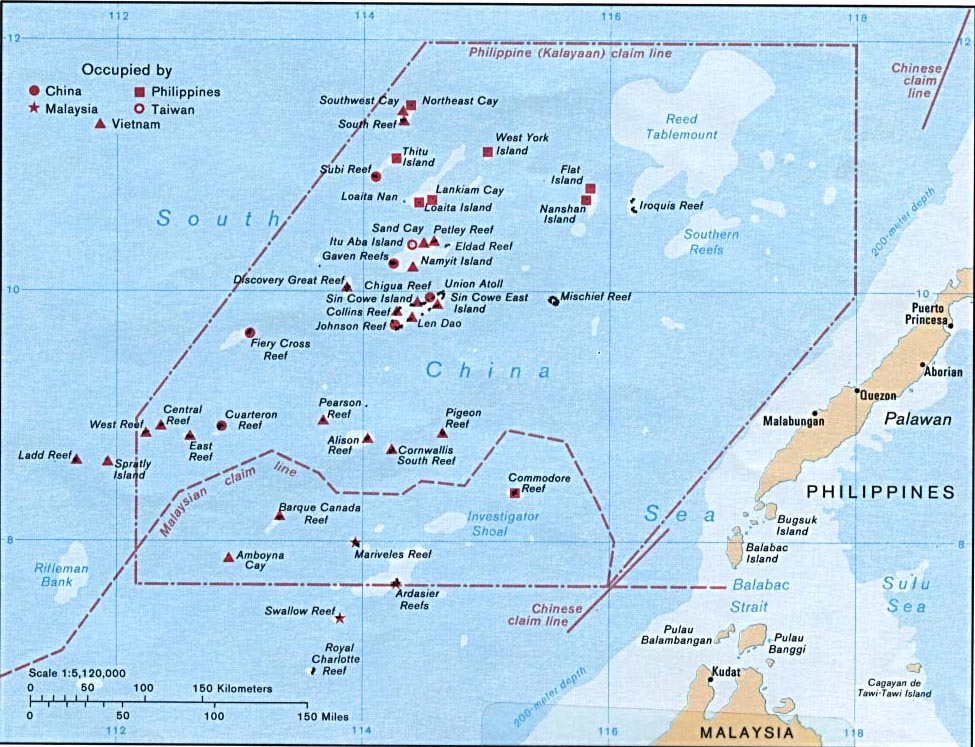An Answer to the Innocent Passage Mystery?
In yesterday’s post, we asked “What did the Navy do in the South China Sea?” That wasn’t a rhetorical question. The Department of Defense hadn’t yet clearly explained what the USS Lassen did during its recent freedom of navigation operation (FONOP) in the South China Sea. Nor has it explained the precise legal basis for the operation.

Published by The Lawfare Institute
in Cooperation With

In yesterday’s post, we asked “What did the Navy do in the South China Sea?” That wasn’t a rhetorical question. The Department of Defense hadn’t yet clearly explained what the USS Lassen did during its recent freedom of navigation operation (FONOP) in the South China Sea. Nor has it explained the precise legal basis for the operation.
Instead, information has gradually trickled out of the Pentagon. First, anonymous sources reported that the Lassen “took steps to indicate it was making a lawful innocent passage with no warlike intent,” including turning off fire-control radars and keeping its helicopters grounded. We found this puzzling: An innocent-passage transit could inadvertently signal that the United States recognizes a territorial sea near Subi and other artificial islands built on low-tide elevations. That would contravene the United States’ view (and the orthodox international law view) that low-tide elevations confer no maritime entitlements, even if artificial islands are built on them.
Today, anonymous sources have tossed out a new piece of information—one which may solve the mystery of why the Lassen’s transit was conducted in a manner that appears to have been consistent with innocent passage. Specifically, Sam LaGrone of USNI News reports that “the feature that required the innocent passage transit was likely Thitu Island, the second largest island in the Spratlys, which has been controlled by the Philippines since the 1970s and home to one of its naval stations.” Thitu is the site of a Philippine airfield and is apparently home to roughly 100 Philippine civilians. Under the UN Convention on the Law of the Sea, an island like Thitu, with a permanent civilian population and a fresh water source, commands a 12-nautical-mile territorial sea.
The upshot is that if the Lassen sailed between Subi Reef and Thitu Island, it was almost certainly less than 12 nautical miles from both, at the same time. That would mean that the Lassen passed within 12 nautical miles of Subi Reef while operating consistent with innocent passage because it was within the territorial sea of Thitu Island. If this was indeed the legal basis for the FONOP, the Lassen’s innocent-passage transit would not necessarily suggest acceptance of a territorial sea around Subi Reef, or other artificial islands built on low-tide elevations.
Two caveats:
First, even if this theory is correct, it only gets us so far. The good news is that it means the FONOP didn’t demonstrate recognition of a territorial sea around Subi Reef. But it still leaves the question what affirmative message the FONOP was meant to send. The mildly bad news is that, because an innocent-passage transit is consistent with a territorial sea, the operation probably didn’t demonstrate our rejection of China’s claim that Subi and other artificial islands built on low-tide elevations command territorial seas. At most, the FONOP was inconsistent with China’s claim that innocent passage for military warships requires advance permission of the coastal state (assuming, as China asserts and the United States disputes, that innocent passage is required near Subi Reef). In assessing what the FONOP did signal, however, it would be useful to know the contents of the communication that transpired between the U.S. and Chinese militaries during the operation. If the PLA warned the Lassen that it was entering Chinese “territorial waters” did the Lassen respond with a message confirming innocent passage? If so, that would have implicitly acknowledged the Chinese maritime claim. If they did not answer, however, but simply operated consistent with innocent passage because of Thitu’s proximity, that would not have bestowed the same recognition.
Second, whether or not Thitu Island is indeed the answer to the innocent-passage mystery, it’s safe to say that the ambiguity surrounding this FONOP has blunted its effect. That may have been the intention all along—a way to satisfy domestic hawks without overly antagonizing China. The problem is that ambiguity is inconsistent with the purpose of freedom of navigation operations: sending a clear message about one’s own view of the law and demonstratively rejecting another state’s view. If one’s view of the law doesn’t come across clearly, the exercise can be futile or even counterproductive. If this FONOP teaches any lessons, it’s that calculated ambiguity isn’t a practicable or desirable approach for future operations.
Finally, we presume that the Department of Defense conducted a painstaking analysis of the precise legal basis for this FONOP, before sending the Lassen on its mission. Whether that rationale involves Thitu Island or not, it’s time to release it.
***
The authors thank Phoebe Benich for her research assistance.






